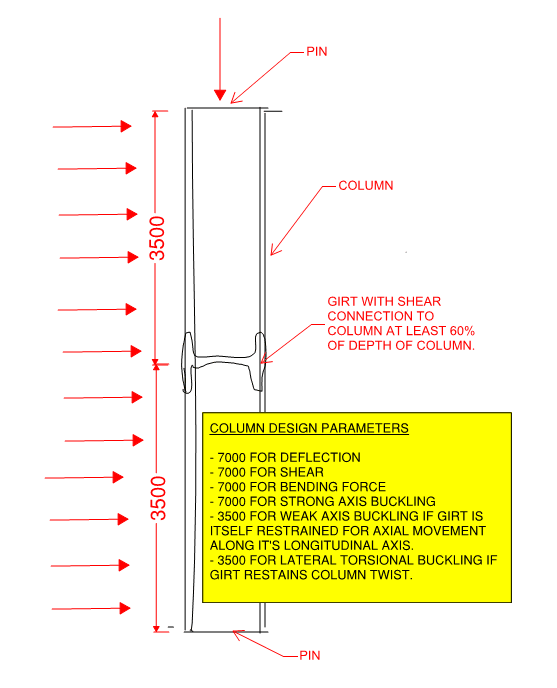civileng01
Structural
I am assuming the column is pinned at both ends and taking the column as a beam for approximate analysis. the length is 7m and I want to take the effective length (3.5m) to reduce buckling, do I use 3.5m length from the start of my calculation from finding reactions, sf, bm and so on.. or only use (3.5m) when finding buckling check?
in real life how is the length reduced to an effective length of 3.5m when it is actually built to 7m?
in real life how is the length reduced to an effective length of 3.5m when it is actually built to 7m?

